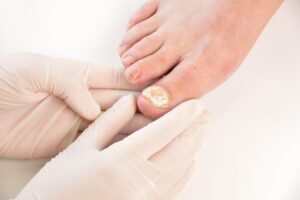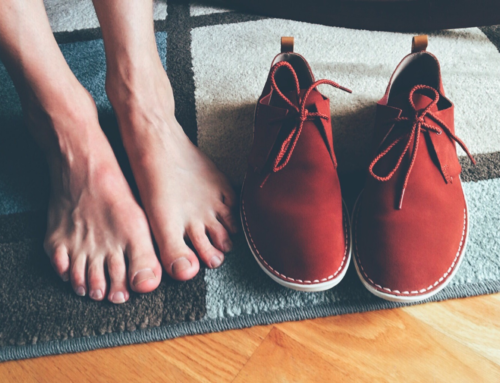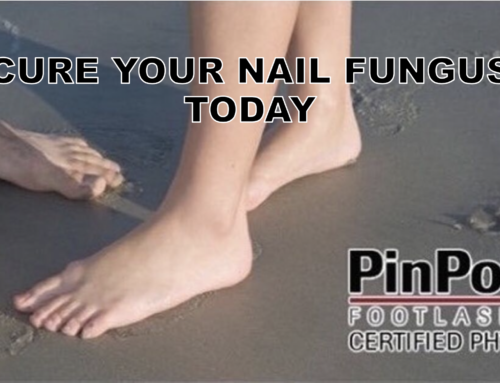Chemical burns from DIY fungus bleaching can be very serious. Attempting to treat toenail fungus at home can seem like a quick and affordable solution. However, using strong household chemicals without proper guidance can be extremely dangerous. Some individuals turn to bleaching methods believing they will eliminate the infection faster. This approach may cause serious harm if used incorrectly or applied directly to skin and nails.
Dangerous chemical burns
Chemical burns from DIY toenail fungus bleaching can occur when harsh products are improperly applied. Many people try using bleach or strong household cleaners to kill fungus quickly. These substances contain corrosive ingredients that can damage skin and nails. Leaving them on too long increases the risk of burns and irritation.
Symptoms may include redness, blistering, swelling, and intense pain around the nail area. Chemical burns can also lead to long-term tissue damage and delayed healing. In severe cases, they may increase the risk of infection and worsen the nail condition. It is safer to seek professional treatment instead of attempting dangerous home remedies. Using over-the-counter antifungal treatments or consulting a podiatrist reduces health risks and heals the nail more effectively.
Avoid chemical burns from DIY remedies
To avoid chemical burns, never apply bleach, household cleaners, or other corrosive agents directly to your skin or nails. Always read the label and follow instructions strictly when using any treatment product. Wear gloves when handling strong chemicals and avoid prolonged exposure. If a product is not specifically designed for skin or nail use, do not apply it. Testing a small area first can help detect sensitivity, but using safe products remains the best option.
Safer alternatives include over-the-counter antifungal creams, medicated nail lacquers, or foot soaks with mild antiseptic solutions. Tea tree oil diluted properly may offer antifungal benefits without causing burns. Seeing a podiatrist ensures proper diagnosis and prescription treatment if needed. Laser therapy or professionally applied antifungal medications are effective options. Consistent foot hygiene, breathable footwear, and regular nail trimming can also help prevent fungal growth without risking chemical injury.

Types of toenail fungus
There are several types of toenail fungus infections, each affecting the toenail in different ways. Distal lateral subungual onychomycosis is the most common. It usually begins at the toenail tip and spreads underneath. The toenail often becomes thick, discolored, and brittle. White superficial onychomycosis affects the top surface of the toenail. It causes white, chalky spots that may spread if untreated.
Another type is white superficial onychomycosis, which affects only the surface of the toenail. It appears as white, powdery patches that can spread if untreated. The toenail may become soft and flaky. This type responds well to early treatment.
Candida onychomycosis is caused by yeast and can affect both toenails and the surrounding skin. It mainly affects fingernails exposed to frequent moisture. It frequently leads to swelling and redness around the toenail. Toenail discoloration may vary from white to brown. Early identification of the infection type helps determine the best treatment method.
Toenail Fungus Symptoms
Toenail fungus often develops gradually and can be easy to overlook in its early stages. One of the first noticeable symptoms is a change in the nail’s appearance. Typically, it begins with a small white, yellow, or brown spot beneath the tip of the nail. As the infection progresses, the discoloration spreads. The nail may become thicker, dull, or brittle, losing its natural shine. The edges of the nail often become ragged or crumbly. In some cases, the nail may start to lift away from the nail bed—a condition known as onycholysis. Patients may also notice an unpleasant odor coming from the affected nail due to fungal buildup and debris trapped beneath it.
As the infection worsens, toenail fungus can cause discomfort or pain, especially when wearing tight shoes or walking. The nail may become distorted in shape, making it difficult to trim. In severe cases, it can even separate completely from the nail bed. The surrounding skin may appear inflamed, scaly, or itchy, particularly if the fungus spreads beyond the nail area. Multiple toenails can be affected at once, and because the condition is contagious, it can spread to other nails. It spreads through shared nail tools, shoes, or floors in communal areas like gyms or pools. Without treatment, the infection can persist for years, leading to ongoing discomfort and cosmetic concerns. Recognizing these symptoms early and seeking proper medical care can help prevent progression and improve treatment success.

Treatment with Laser Nail Therapy
The PinPointe FootLaser offers several appealing benefits for individuals struggling with toenail fungus, medically known as onychomycosis, particularly those seeking a noninvasive, drug-free treatment option. One of its primary advantages is that it targets the fungus directly beneath the nail without the need for oral medications, which can sometimes cause liver-related side effects or interact with other prescriptions.
The laser energy penetrates through the nail plate to heat and weaken the fungal cells. This allows the body’s natural processes to promote healthy nail growth. The procedure is quick—typically lasting around 30 minutes per session—and requires no anesthesia or downtime. This allows patients to resume normal activities immediately afterward. For many, this makes it a convenient and safe alternative to long courses of antifungal pills or topical creams that may take months to show visible results.
We offer free consultations
We offer free consultations to see if laser treatment is right for you. At our clinic, laser nail therapy with the PinPointe Footlaser is our specialty. We focus on this treatment because it offers a safe, effective, and medication-free solution for stubborn toenail fungus. We understand how frustrating it can be to deal with thick, discolored nails and how overwhelming it is to sort through different treatment options.
During this consultation, our foot doctors will evaluate your nails, discuss your health history, and determine whether laser treatment is the best choice. During your consultation, we will:
- Examine your nails to confirm the diagnosis and assess severity.
- Explain exactly how the PinPointe FootLaser works and what you can expect during and after treatment.
- Give you a realistic timeline for seeing clearer, healthier nails.
- Answer any questions you have about nail care and preventing reinfection.
Our goal is to help you confidently move forward with a treatment plan that finally addresses your toenail fungus safely and effectively, without the side effects or drug interactions of oral medications.





